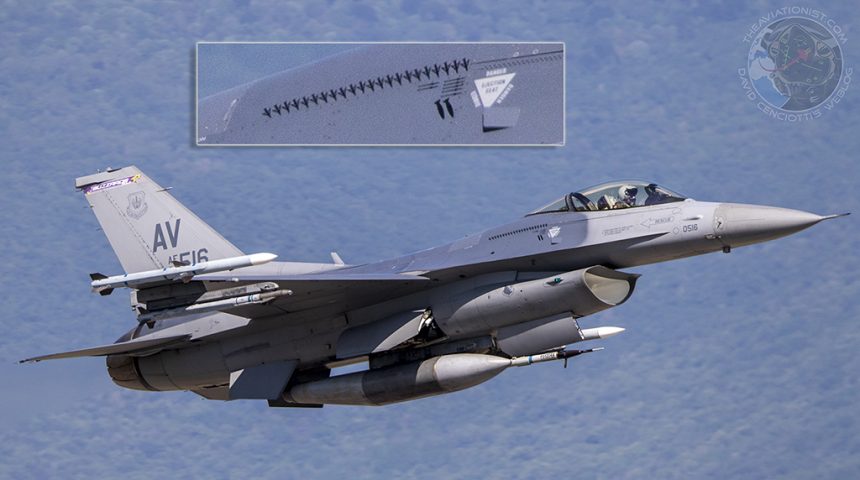Several spotters have noticed interesting weapon markings on some of the Buzzards “Vipers” deployed to the UK.
Last week, the F-16s of the 31st Fighter Wing, from Aviano Air Base, Italy, have started returning home after an FTD (Flying Training Deployment) at RAF Lakenheath, UK, home of the 48th Fighter Wing.
During their stay, that started on Aug. 28 and officially ended on Sept. 28, 2020 (although the last remaining aircraft returned to Italy on Oct. 5) the 16x F-16CM/DM Fighting Falcon jets, belonging to the 510th Fighter Squadron “Buzzards” and 555th FS “Triple Nickel”, have carried out several missions: they have performed close air support training with the 321st Special Tactics Squadron, the 19th Regiment Royal Artillery and the 2nd Air Support Operations Squadron; they have taken part in Point Black 20-4, a Large Force Exercise with more than 50 aircraft from the U.S. Air Force, the U.S. Marine Corps, the Royal Air Force, and the Royal Netherlands Air Force; they have dropped PGMs (Precision Guided Munitions) on air to ground ranges and have also flown at low level through the British Low Flying Areas.
According to an official release, altogether the team flew 292 sorties with a total of 471.6 flying hours, 10 of which were in support of Exercise Point Blank, delivered 90 precision guided munitions, and fired 11,944 20mm rounds. Additionally, the training enabled 53 joint terminal air controllers from multiple countries to attain proficiency through 524 close air support calls.
The deployment of the Aviano Vipers attracted several British aircraft spotters and photographers who took many shots of the F-16s flying their day and night sorties. Some of them noticed the presence of interesting markings on some of the 31st FW airframes at RAF Lakenheath: in particular, both 87-0355, 88-0521 and 89-2008 of the 510th FS sport silhouettes of several weapons, including the GBU-39 SDBs (Small Diameter Bombs), APKWS laser-guided rockets from the LAU-131A/A pod, and JDAM (Joint Direct Attack Munitions).
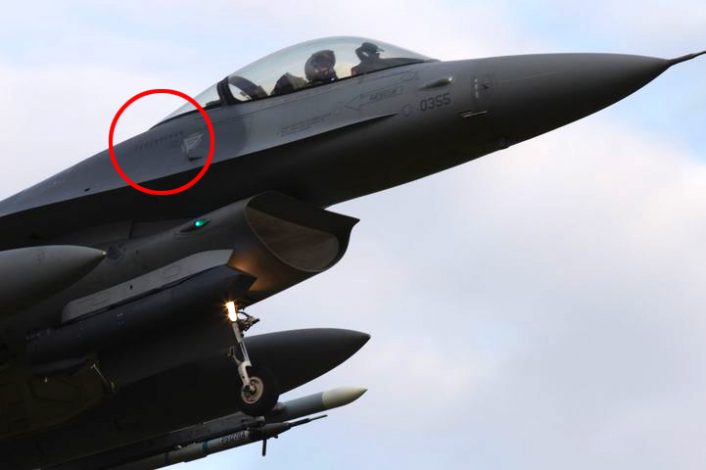
Other 510th FS aircraft, which have not deployed to the UK, have similar markings: we have spotted bomb/rocket silhouettes on 88-0413, 88-0516, 89-2029 (on the left hand side of the cockpit) and 89-2102.

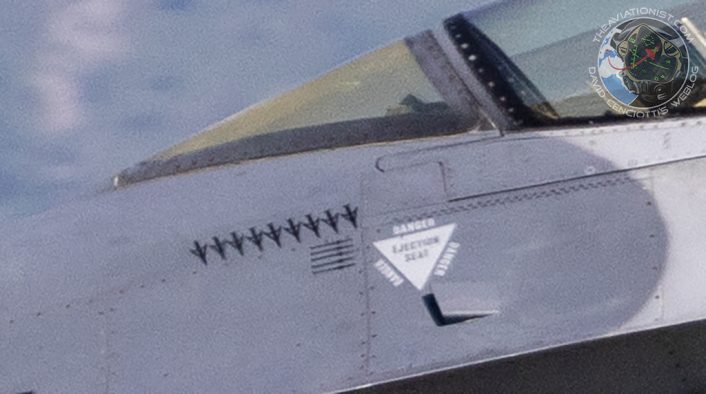
The markings were earned by the 510th FS in Afghanistan, during the deployment of the “Buzzards” at Bagram Air Base, from October 2018 to April 2019. Back then, 12x F-16s, operating as 510th Expeditionary Fighter Squadron, subordinated to the 455th Air Expeditionary Wing, Air Force’s primary counterterrorism wing in Afghanistan, flying CAS (Close Air Support) sorties in support of Operations Freedom’s Sentinel and the NATO Resolute Support missions.
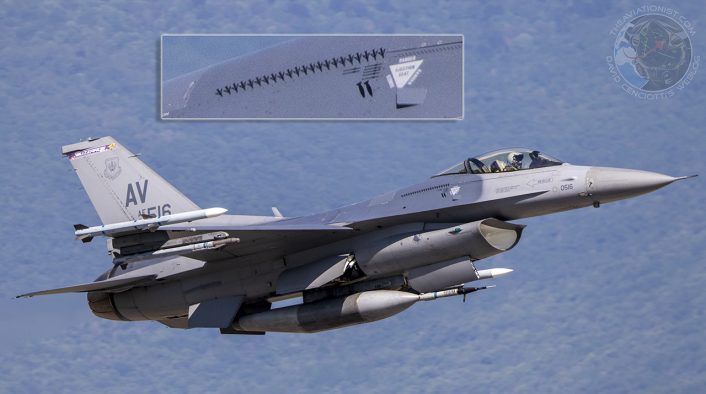
“The 510th EFS at Bagram Airfield delivers precision fire to protect U.S. and coalition forces in support of Operations Freedom’s Sentinel and the NATO Resolute Support mission. While many fighter squadrons have multi-role missions and train across the spectrum of air threats, surface threats and close air support strategic strikes, this team focuses mainly on the close air support aspect. Freeborn said the airpower they deliver helps ensure the safety of the ground forces they support,” said a public statement issued back then.
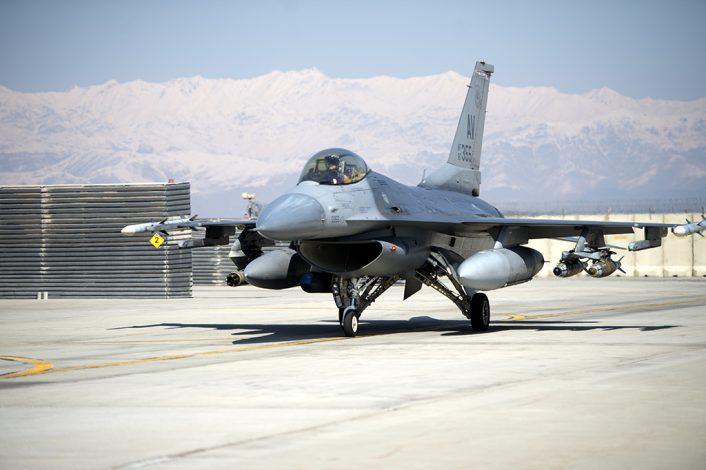
Those CAS missions were flown in various payload configurations: based on the photos we have observed, the F-16s in Afghanistan carried 7x AGR-20A Advanced Precision Kill Weapon System (APKWS) along with 1x GBU-38 IN/GPS-guided and 1x GBU-54 500-lb laser-guided JDAMs (Joint Direct Attack Munitions); or the 1x GBU-38, 1x GBU-54 and 4x GBU-39 SDB (Small Diameter Bombs). In both cases, the aircraft also carried external fuel tanks as well as the Sniper ATP (Advanced Targeting Pod).
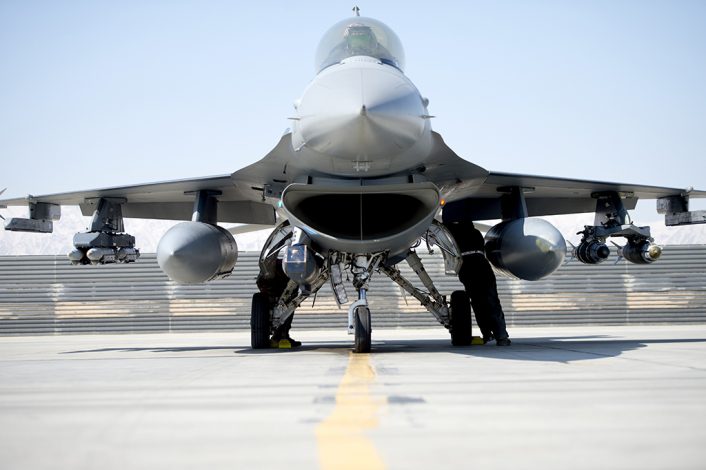
As already explained in the past, bomb and kill markings are a very well-known tradition in military aviation; moreover, they don’t always provide the exact number of weapons dropped in combat, because depending on the deployment, type of aircraft etc, silhouettes can mark more than one bomb or cannon round. Anyway, the markings on the airframes that the Buzzards brought with them at Bagram AB give at least a hint about the type of ordnance they have mostly used flying CAS missions in Afghanistan. In this case, it looks like the Aviano Vipers have made extensive use of GBU-39 SDBs.
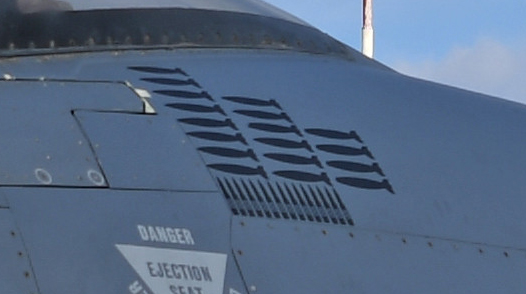
The GBU-39 SDB
The GBU-39 is a 250-lb multipurpose, insensitive, penetrating bomb with a blast-fragmentation warhead for stationary targets.
It is equipped with deployable wings for extended standoff range that open upon release allowing the GPS-guided bomb to glide for several miles before hitting the target with accuracy.
GBU-39s are quite small: they are usually carried in two pairs underneath the fuselage (on tactical jets) or on the underwing pylons (on the AC-130W that is the largest aircraft to use this kind of bomb).
The SDB is often the weapon of choice when accuracy from distance is required to engage a static target with less collateral damage; a GBU-39 launched at high-speed from high altitude can travel for as much as 50 miles, allowing the attack plane to remain outside the range of any ground-based threat.

